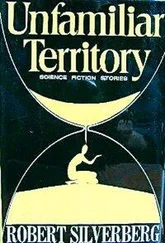A contributor to the appearance of waves of M&A activity may be a kind of multiplier effect induced by the breaking up or rationalization of acquired firms. For instance, a buyer may want only the target’s domestic operations, not foreign; or only certain product lines; or only specific assets. Thus, one acquisition triggers a cascade of other deals. Porter (1987) finds that 53 percent of acquisitions are sold within five years, evidence consistent with a process of asset rationalization.
The incentive to seek economic “rents” is always present. Theories of monopoly and competitive positioning have little to say about waves of M&A activity over time. But the theories help to rationalize tendencies toward industry consolidation. Exactly what triggers these consolidations is unclear in the theory. Still, the theory suggests two diagnostic questions useful to practitioners:
1 Does the structure of my industry provide opportunities for consolidation through M&A? Industries consisting of many small competitors may be ripe for consolidating mergers. Highly concentrated industries may pose barriers to entry through M&A.
2 What is the current antitrust policy in this country and toward this industry? Government policy changes with changes in administration and may be associated with different moods of constraint or buoyancy in M&A activity.
Nelson’s (1959) classic study of M&A waves suggested that surprising changes in demand could trigger firms’ acquisitions additional capacity through M&A. Acquisition is simply one branch of the “make or buy” decision. Gort (1969) suggested that the “economic disturbance” induced by industry surprises would trigger a wave of acquisition activity when it becomes cheaper to buy than to make. Gort’s idea was that industry shocks alter the mean and variance of investors’ assessments of intrinsic value for firms—such shocks could derive from unexpected changes in demand, changes in technology, movements in capital markets, and generally, changes in entry barriers within industries. Lambrecht (2002) extends the theory of industry shocks in a real options framework. He argues that firms always have the option to acquire instead of growing organically. Positive shocks increase the uncertainty or volatility of the firms’ asset values, and therefore the value of the “merger option.” This induces a rise in merger activity.
The theory of industry shocks is appealing, not only because it can rationalize merger waves (e.g., caused by large-scale shocks), but also the clustering of M&A activity within industries or regions (e.g., caused by more focused shocks). Finally, this theory can embrace a wide range of possible drivers, including globalization, trade liberalization, changes in tax, accounting, government regulation, and antitrust policy; see, for instance, Ravenscraft (1987). Several empirical studies support the notion that industry shocks drive M&A activity. Mitchell and Mulherin (1996) found that in the 1980s merger wave, industries with the greatest amount of takeover activity were those that experienced fundamental economic shocks like deregulation, technological innovation, demographic shifts, and input price shocks. They wrote:
Our work also has implications for interpreting the effect that a takeover announcement for one firm in an industry has on the equity value of other industry members. Because we find that takeover activity has industry-driven factors, our results imply that one firm’s takeover announcement gives information about other industry members that may be tied to economic fundamentals rather than market power, as is often asserted by regulators. Some observers express concern that takeovers are too often followed by business failures. Because we find that takeovers are driven in part by industry shocks, it is not surprising that many firms exhibit volatile performance following takeovers, with actual failures following some negative shocks. Rather than being the actual source of performance changes, the takeovers are often merely messengers of the underlying economic changes taking place in the industry. (Pages 195–196)
Schoenberg and Reeves (1999) identified the most important determinants of industry merger activity as being, in order: deregulation, industry growth rate (higher growth attracts more acquisitions), and industry concentration (lower concentration attracts more acquisitions). Jovanovic and Rousseau (2002) have argued that large technological change and M&A activity are associated. They studied the waves of the 1890–1930 and 1971–2001 and conclude that the former was significantly associated with the diffusion of electricity and the internal combustion engine and the latter with the diffusion of information technology. Mitchell and Mulherin (1996) offer a sample of industry shocks affecting M&A activity in the 1980s: banking and broadcasting by deregulation, textiles by liberalized trade policy, energy by petroleum price changes, food processing by a demographic shift/low population growth. Jensen (1988) noted that a slowdown in primary industry growth may spur firms to acquire as a means of reallocating resources into higher growth areas.
The theory of industry shocks also is relevant to the choice of diversifying or focusing the firm. Maksimovic and Phillips (2001, 2002) studied acquisitions of manufacturing plants. Their model suggests:
Firms become focused when their prospects in their main industry significantly improve. They may optimally choose to remain unfocused if their prospects in their main industry are not as good as other firms that choose to become focused. Firms sell assets in their less productive divisions following positive demand shocks for these divisions…. Industry shocks alter the value of the assets and create incentives for transfers to more productive uses…. Assets are more likely to be sold (1) when the economy is undergoing positive demand shocks, (2) when the assets are less productive than their industry benchmarks, (3) when the selling division is less productive, and (4) when the selling firm has more productive divisions in other industries. For mergers and acquisitions, we find evidence that the less productive firms stand to sell at times of industry expansion. Firms are more likely to be buyers when they are efficient and are more likely to purchase additional assets in industries that experience an increase in demand. (2001, pages 2020–2021)
As a practical matter, industry shocks yield a rich range of explanations for M&A activity, waves, and industry clusters of transactions. Detailed comments on implementing this perspective are given in the next two sections and in Appendixes 1–4 of this chapter. The tools and concepts in Chapter 6further support an analytic understanding of the effect of industry shocks on M&A activity.
Summary Overview of the Drivers of M&A Activity
The primary inference from this research is that any explanation of the sources of M&A activity will tell a complicated multicause story. Consider a division of explanations for M&A activity based on the rationality of markets and buyers’ managers. This creates a matrix of four camps of explanations for M&A activity, as shown in Exhibit 4.5. 8
1 Rational managers and markets. In the northwest corner of the table is the “base case” of economics, which assumes that markets and the decision makers within those markets are rational. In this quadrant, share prices fairly reflect intrinsic value. Managers take effective action to maximize share prices. Economics offers the richest set of explanations for M&A activity here: Both waves and industry clustering can be rationalized. But assumptions of widespread rationality have become the piñata for business critics and reregulation advocates. Even the friends of M&A would have to admit, following the experience of 1995–2000, that bubbles happen.
Читать дальше












